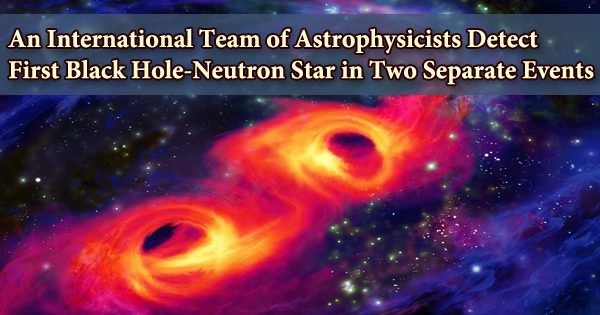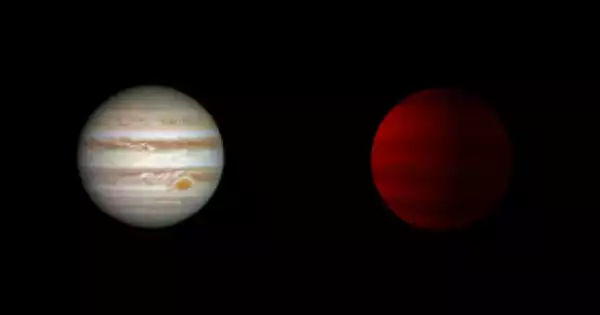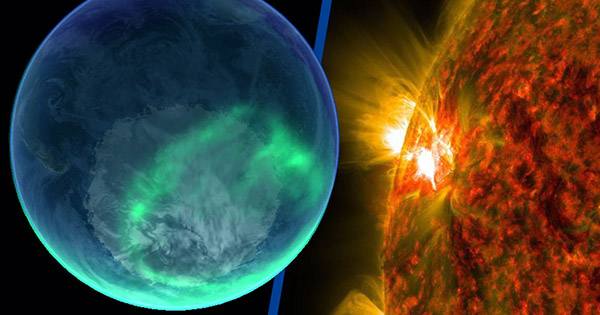A “protoplanetary disk” of gas and dust that made up the early solar system spun around the sun before finally forming the planets we see today.
Researchers at MIT and other institutions have recently examined old meteorites and found evidence for a mystery gap that occurred within this disk around 4.567 billion years ago, not far from where the asteroid belt is now. The team’s findings, which were published in Science Advances today, offer concrete proof of this discrepancy.
“Over the last decade, observations have shown that cavities, gaps, and rings are common in disks around other young stars,” says Benjamin Weiss, professor of planetary sciences in MIT’s Department of Earth, Atmospheric, and Planetary Sciences (EAPS).
“These are important but poorly understood signatures of the physical processes by which gas and dust transform into the young sun and planets.”
The reason for the gap in our own solar system is also unknown. Jupiter might have had some influence, for instance. It’s possible that the gas giant’s strong gravitational attraction caused gas and dust to move away from the growing disk, leaving a gap there as it took shape.
Another theory would involve winds arising from the disk’s surface. Strong magnetic fields control early planetary systems. These fields can generate winds strong enough to blast material out of a rotating disk of gas and dust, creating a gap in the disk in its wake.
Whatever its origins, the early solar system probably contained a gap that acted as a cosmic boundary, preventing material on either side from interacting. This physical separation has influenced the composition of the planets in the solar system.
The Earth and Mars, for example, developed from gas and dust on the inner side of the gap, but gas and dust on the outer side of the gap formed in icier regions, resulting in Jupiter and its surrounding gas giants.
Gaps are common in protoplanetary systems, and we now show that we had one in our own solar system. This gives the answer to this weird dichotomy we see in meteorites, and provides evidence that gaps affect the composition of planets.
Cauê Borlina
“It’s pretty hard to cross this gap, and a planet would need a lot of external torque and momentum,” says lead author and EAPS graduate student Cauê Borlina. “So, this provides evidence that the formation of our planets was restricted to specific regions in the early solar system.”
Co-authors with Weiss and Borlina include Xue-Ning Bai of Tsinghua University, James Bryson of Oxford University, and Eduardo Lima, Nilanjan Chatterjee, and Elias Mansbach of MIT.
A split in space
Scientists have noticed a peculiar split in the makeup of meteorites that have reached Earth over the past ten years. When the solar system was first forming, these space rocks were created at various times and places. One of two isotope combinations can be seen in those that have undergone analysis.
Rarely have meteorites been discovered to display both of the “isotopic dichotomy.” Although there hasn’t been conclusive confirmation of a gap in the disk of the early solar system, scientists have speculated that it may be the cause of this dichotomy.
The research team of Weiss examines meteorites for evidence of earlier magnetic fields. A magnetic field that is present when a young planetary system forms might alter in strength and direction based on a number of processes occurring within the developing disk. Electrons within chondrules, which are granules of ancient dust, aligned with the magnetic field in which they developed.
Today’s meteorites contain chondrules, which can be as small as a human hair in diameter. Weiss’ team specializes on chondrule measurements to pinpoint the ancient magnetic fields where they developed.
In earlier research, the team examined samples from the noncarbonaceous meteorites, one of the two isotopic groupings of meteorites. These rocks are believed to have come from an early solar system “reservoir,” or area, that was relatively close to the sun. The ancient magnetic field was previously found in samples from this nearby area by Weiss’ group.
A meteorite mismatch
The scientists in their current study questioned if the magnetic field would be the same in the second isotopic, “carbonaceous” group of meteorites, which are believed to have originated further outside the solar system based on their isotopic makeup.
They examined two chondrules from carbonaceous meteorites found in Antarctica that were each about 100 microns in size. The group identified each chondrule’s original, prehistoric magnetic field using the high-precision microscope known as the superconducting quantum interference device, or SQUID, at Weiss’ lab.
Unexpectedly, they discovered that their field strength was greater than that of the noncarbonaceous meteorites they had previously examined that were closer in. Scientists anticipate that when newly formed planetary systems move away from the sun, the magnetic field’s strength should degrade.
In contrast, Borlina and his coworkers discovered that the near chondrules had a magnetic field of 50 microteslas, but the distant chondrules had a magnetic field of roughly 100 microteslas. The current strength of the Earth’s magnetic field is approximately 50 microteslas.
The magnetic field of a planetary system is an indicator of its accretion rate, or how much gas and dust it may gradually suck into its center. The magnetic field of carbonaceous chondrules indicates that the outer area of the solar system must have been accreting substantially more mass than the inner region.
The scientists came to the conclusion that the gap between the inner and outer areas, which could have lessened the quantity of gas and dust moving toward the sun from the outer regions, is the most likely reason for the discrepancy in accretion rates.
“Gaps are common in protoplanetary systems, and we now show that we had one in our own solar system,” Borlina says. “This gives the answer to this weird dichotomy we see in meteorites, and provides evidence that gaps affect the composition of planets.”
This research was supported in part by NASA, and the National Science Foundation.
















